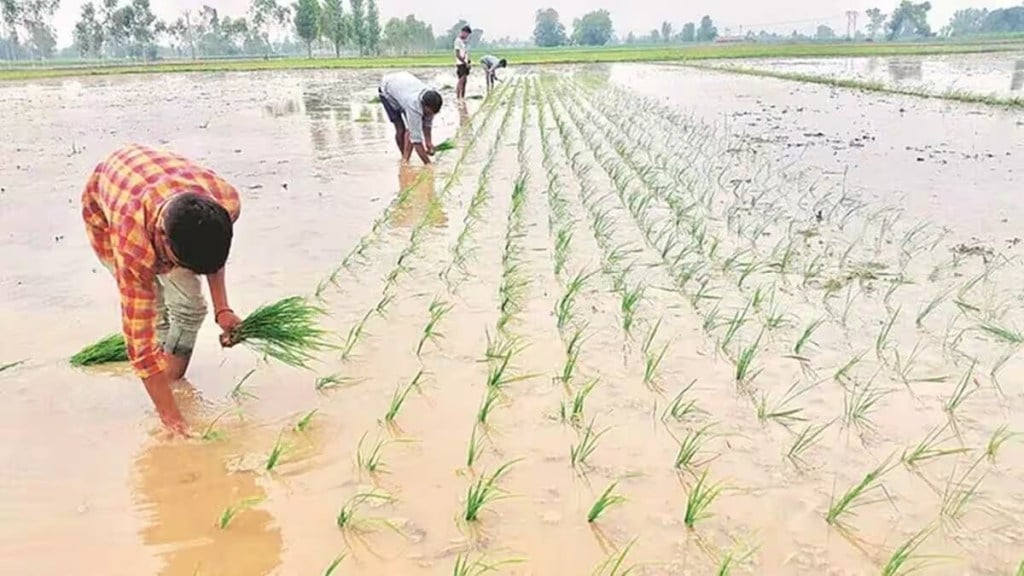Surplus rains in the northwest India including Punjab, Haryana, Himachal Pradesh and Uttarakhand have disrupted the supplies and submerging standing crops such as vegetables and paddy in many parts of the region.
Agriculture ministry officials said that despite overall surplus in the monsoon rains so far, there has been deficiency in precipitation in the key paddy growing states of Bihar, Jharkhand, West Bengal, Odisha and Telangana where transplantation has been delayed.
“There are reports of submergence of paddy sown areas in Ropar, Patiala, Fatehgarh Sahib, Mohali and Ludhiana districts,” an agriculture department official from Punjab told FE. However, in Haryana, rains have given a boost to paddy sowing.
According to initial reports, due to supply disruption, there has been a spike in the prices of several vegetables including tomato in the northern region which could lead to higher food inflation in the coming months. Retail food inflation in May, 2023 which had dropped to 2.91%, lowest since November, 2021, could go up in the coming months because of costlier prices of vegetables and rice.
“Negative vegetable inflation for the last many months has played a significant role in keeping inflation in check. If prices don’t come down, it could lead to higher inflation rates for July,” Tushar Trivedi, head of farm business, nurture.farm, an agri-tech enterprise, said.
Besides, tomato prices which had been at an elevated level since the beginning of this month, most of the vegetables including lady finger, bitter gourd, bottle gourd and cucumber are selling in the range of Rs 60 – Rs 90/kg, trader sources said.
Ginger prices have increased by 25% to Rs 300/kg on Tuesday from Rs 240 per kg prevailed a week back in the Delhi retail market.
“Excessive rainfall can cause crop damage, leading to a decrease in overall vegetable harvesting. This limited supply creates a demand-supply imbalance, driving up prices in the market,” Saket Chirania, co-founder, Agrizy, said.
Despite the monsoon being in active mode in the last fortnight, overall sowing of kharif crops — paddy, pulses, oilseeds and cotton — has trailed year ago level so far. Till July 7, 35.3 million hectare (MH) has been covered under the kharif crops, a decline of 8.6% on year.
Sowing of rice, pulses such as tur, urad and moong and oilseeds including groundnut and sunflower have declined by 23.9%, 25.8% and 14.3% respectively on year so far. The sowing of cotton, a cash crop, is around 10.8% less than a year ago.
According to the India Meteorological Department (IMD), the rainfall till Tuesday has been 2% above the normal benchmark.
The northwest region has received 62% more rainfall than “normal.” Regionise the monsoon deficiency so far has been 23% in the south peninsula and 19% in north-east so far.
Key paddy growing states – Jharkhand (-43%), Odisha (-26%), West Bengal (-14%), Bihar (-33%) and Telangana (-31%) are still reporting deficient rainfall.
IMD on Tuesday predicted reduction in rainfall over Himachal Pradesh, Punjab and Haryana while extreme rainfall activity is likely over northeast, Bihar and Uttar Pradesh in the next two days.
Additionally the met department predicted ‘below normal’ rainfall activities in the next three days over the key paddy growing states of West Bengal, Jharkhand and Odisha.
Meanwhile, the Soybean Processors Association (SOPA) in a survey has stated that the oilseed variety has been sown 9.05 million hectare (MH) so far while the agriculture ministry has estimated the sowing at 5.5 MH
“Because of the delay in onset of monsoon and some minor shift to other crops, the total area under soybean this year may be slightly lower than last year,” SOPA said in a statement on Tuesday.
